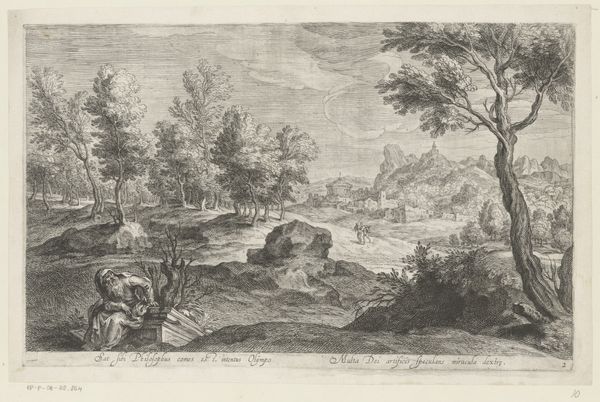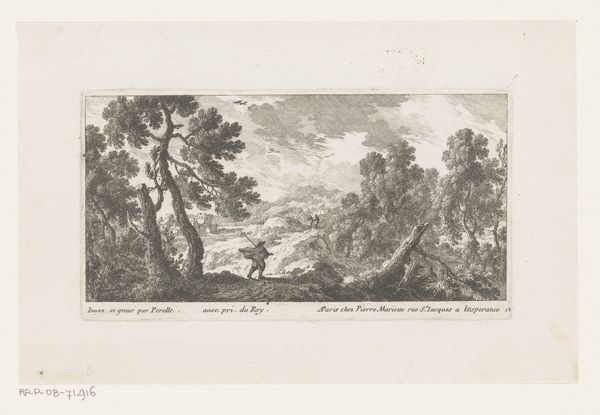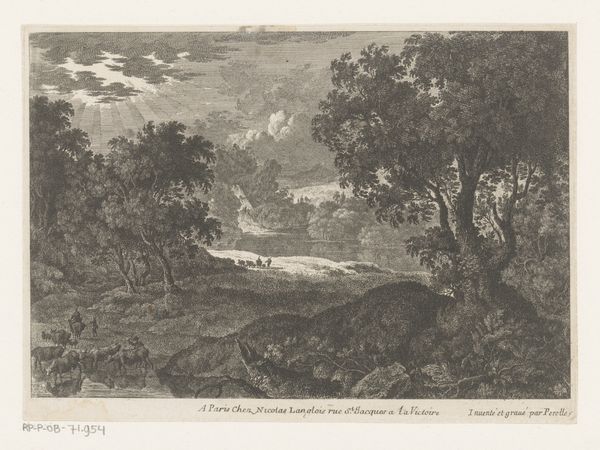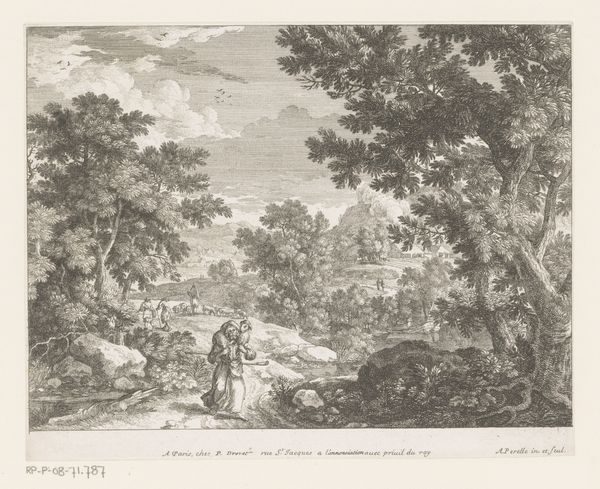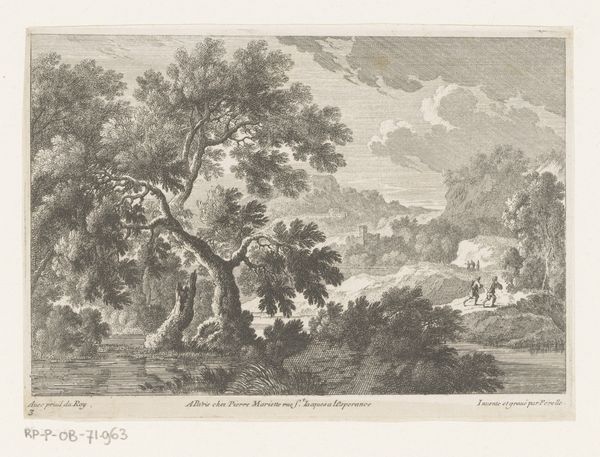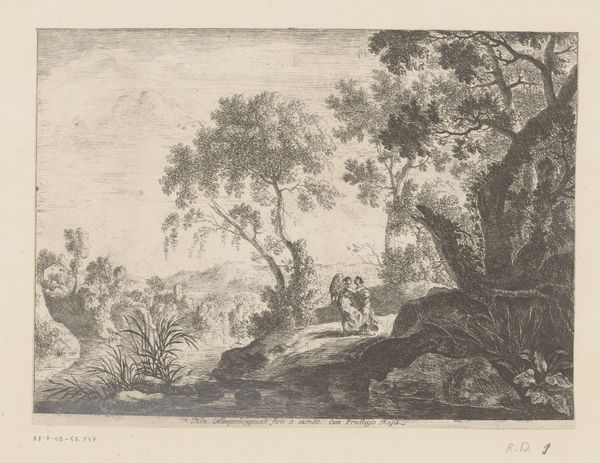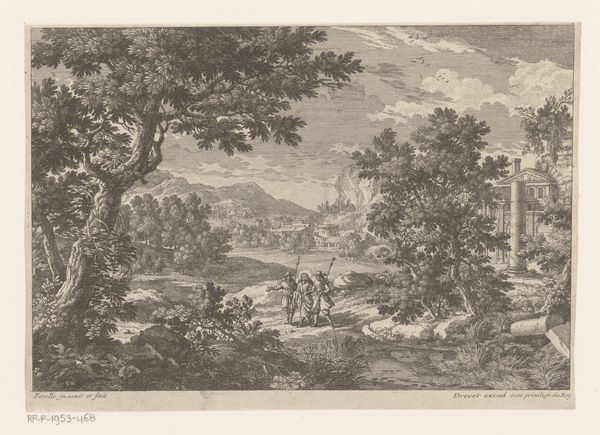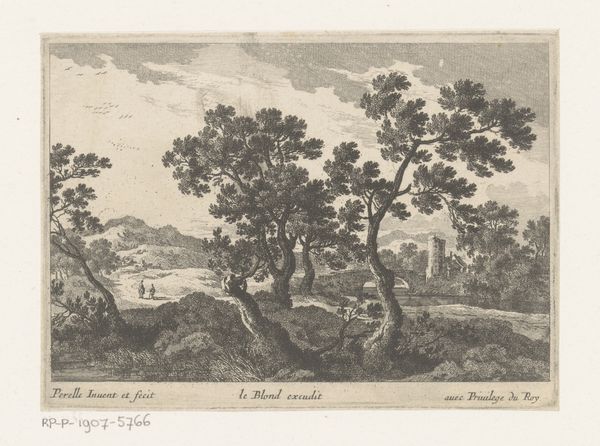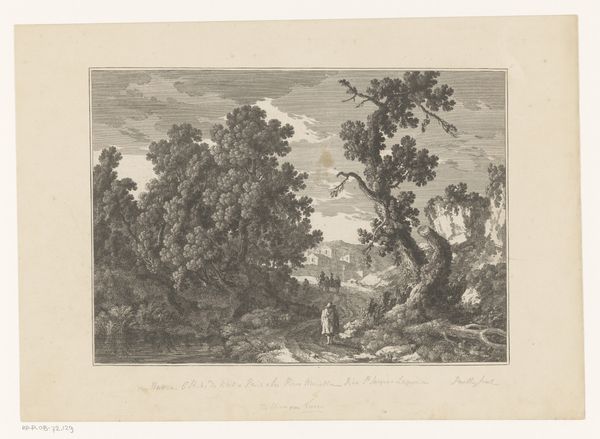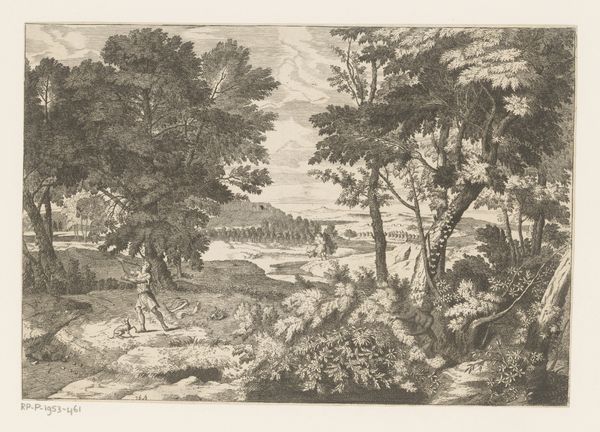
print, engraving
#
baroque
# print
#
landscape
#
figuration
#
line
#
engraving
Dimensions: height 131 mm, width 196 mm
Copyright: Rijks Museum: Open Domain
Curator: This engraving, "Landschap met ruïne," by Nicolas Perelle, dates to sometime between 1613 and 1695 and comes to us from the Baroque period. It resides here at the Rijksmuseum. Editor: The delicacy of line strikes me first. It's all grays and detailed vegetation – there's something very precise, yet melancholic, about it. Curator: That balance between precision and emotion is key, I think. Landscape prints like these became increasingly popular. Perelle played with perspective, inviting viewers to imaginatively travel into these idealized worlds. He aimed at representing landscape not for topographical accuracy but to express more generally harmonious states. Editor: So it's less about documenting a real location and more about constructing a desired environment, which serves as a reminder about the politics embedded into representation. Who got to dream about an idealized rural place in contrast with growing urban populations, and what was the role of power in producing and circulating that dream? Curator: Exactly! Prints facilitated the distribution of these ideals. Consider, too, the ruined architecture nestled in the background. The ruin motif, prevalent at this time, often evoked notions of faded empires, and offered lessons through the rise and fall of states and different political structures. Editor: It feels like a deliberate staging. You have shepherds seemingly pausing in their duties, perhaps contemplating the ruin, with nature quietly encroaching. The tiny human figures underscore the supremacy of natural cycles of decay and growth over the short-term political cycles, reminding us of our insignificance in the face of these enormous timescales. I notice the artist signature there; it almost reminds the viewer of who should be credited for this representation. Curator: Indeed. Perelle made numerous such landscapes. Studying his broader body of work lets us contextualize the function these artworks had during his era in constructing social and political imaginaries, both then and now. Editor: It certainly invites a closer consideration of the narratives we continue to build and value within, and through, our institutions. Curator: A powerful thought with which to leave our listeners.
Comments
No comments
Be the first to comment and join the conversation on the ultimate creative platform.
